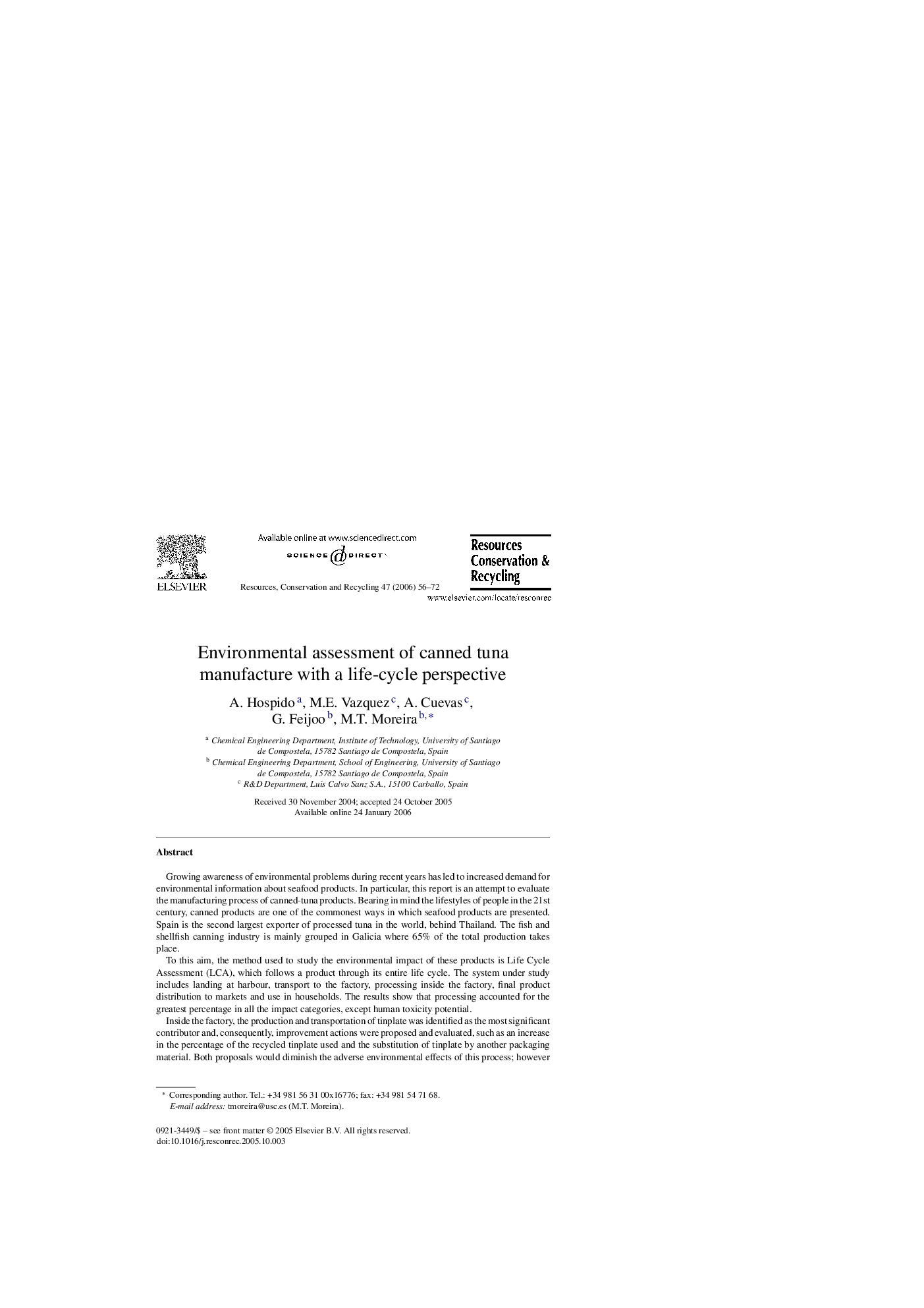| Article ID | Journal | Published Year | Pages | File Type |
|---|---|---|---|---|
| 1064068 | Resources, Conservation and Recycling | 2006 | 17 Pages |
Growing awareness of environmental problems during recent years has led to increased demand for environmental information about seafood products. In particular, this report is an attempt to evaluate the manufacturing process of canned-tuna products. Bearing in mind the lifestyles of people in the 21st century, canned products are one of the commonest ways in which seafood products are presented. Spain is the second largest exporter of processed tuna in the world, behind Thailand. The fish and shellfish canning industry is mainly grouped in Galicia where 65% of the total production takes place.To this aim, the method used to study the environmental impact of these products is Life Cycle Assessment (LCA), which follows a product through its entire life cycle. The system under study includes landing at harbour, transport to the factory, processing inside the factory, final product distribution to markets and use in households. The results show that processing accounted for the greatest percentage in all the impact categories, except human toxicity potential.Inside the factory, the production and transportation of tinplate was identified as the most significant contributor and, consequently, improvement actions were proposed and evaluated, such as an increase in the percentage of the recycled tinplate used and the substitution of tinplate by another packaging material. Both proposals would diminish the adverse environmental effects of this process; however they imply a change in the final appearance of the product to be consumed and, therefore, acceptance by consumers is a fundamental factor in their success.
